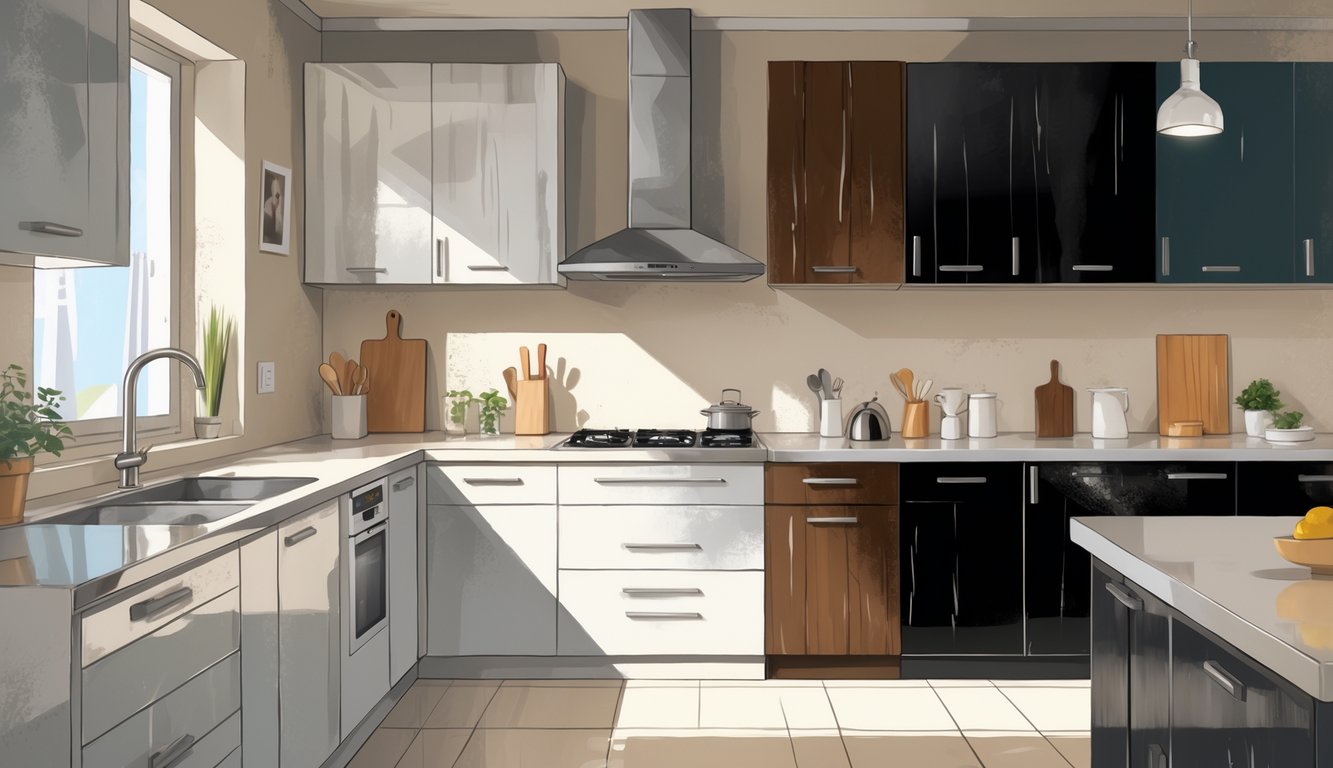
Painted Cabinet Finishes: Common Pitfalls
What still drives me nuts? Cabinets looked amazing for a week, then all the stuff nobody warns you about starts happening. Think painted finishes are an easy win? Wait until you see what daily life does—clumsy mornings, constant wiping, sunlight ambushes.
Chipping and Peeling Issues
Pulled open a drawer—there goes a chip. Now it’s mocking me every time I walk by. Painted finishes, no matter how much you stress over color, chip around handles and corners first. It’s not just a little flake, either—it snowballs. Cold pans, fingernails, a rough sponge, and suddenly you’re living in a paint-peeling nightmare.
Industry pros say painted finishes last about ten years, but I’ve seen edges peel and bubble in half that time if prep or paint quality is off. My cousin bragged about some miracle paint, then repainted within a year. Skip degreasing or mess up the humidity? Forget it—the paint lifts right off. I keep reading about this in those “what not to do” lists—like, don’t paint when it’s too humid or cold (apparently 65–85°F, humidity under 50% is the sweet spot). People always cut corners, and it always backfires—see the cabinet painting mistakes everyone makes at least once.
Color Fading Over Time
Funny how the brightest blue turns into a weird gray-green just because your kitchen window faces the wrong way. Sunlight is brutal, and most paints can’t handle it, no matter what the swatches pretend. Even expensive paints fade.
Manufacturers promise “rich, lasting pigments,” but my own kitchen says otherwise—within a few years, high-traffic doors start looking washed out. Even worse, different doors fade at different rates, so you get this patchwork effect. I saw this in a cabinet finishes report—regular exposure leads to unpredictable fading, especially on lighter or trendy finishes. A neighbor tried touching up, but the new paint never matches the faded bits, so it just looks weird.
Difficult Repairs
Want a headache? Try fixing a single chip without it looking like you used whiteout. Touch-up kits promise miracles, but even pros groan when you ask for painted cabinet repairs. Paint touchups almost always show—wrong sheen, off color, weird texture.
I tried it after a minor scratch—ended up with a shinier, whiter patch that looked worse than the scratch after two months. You have to sand, prime, match paint, sometimes repaint the whole door. Not my idea of a fun weekend. Finish experts and DIYers agree: repairs rarely blend, and piling new paint on old just makes the flaws stand out. If you want it to look right, you’re probably refinishing the whole door, maybe the whole cabinet. “Quick fix”? Not really.
Stained and Natural Wood Cabinets: Issues to Consider
People get so hyped for that wood grain—until maintenance eats up their weekends and weird finish problems pop up. Stains and natural wood cabinets seem like they should be the answer, but then the problems start showing up, and suddenly you’re spending way more time fixing things than enjoying your kitchen.
Uneven Application and Blotching
Scraped another cabinet door yesterday—total disaster. The stain just went wild: some spots got dark, others barely took at all. Pine, maple, birch? Forget it. Those tight grains are basically out to get you. Everyone online or at the hardware store keeps preaching about “wood conditioner” or “gel stain,” but if that stuff actually worked, why do I still see blotches? I asked my contractor buddy for advice; he just shrugged and said to always test on scrap wood. Like I’m going to do that every single time? Sure.
Lighting in the kitchen? Don’t even get me started. The blotches morph depending on which bulb is flickering or if it’s just that weird afternoon sun. I swear, stain soaks in deep on one side, beads up on the other. It’s like the wood’s trolling me. And those “DIY, no skills needed!” kits? Absolute joke—treat stain like paint and you’ll get tiger stripes or cloudy messes, especially on anything that isn’t solid hardwood. Professional refinishing? Only if you want to light a grand on fire, which, according to average kitchen re-staining prices, is kind of the vibe.
Wood Grain Visibility Challenges
Stain’s supposed to show off the wood grain, right? Yeah, sure. What it actually does is highlight every knot, botched filler job, and lazy sanding swirl I missed. Go darker? Even worse—suddenly I’m seeing scratches I didn’t know existed. Sometimes I wish I’d just painted the whole thing.
Cabinetmakers love to talk about “natural character,” but if your panels don’t match, the kitchen looks like a thrift store quilt. Natural’s fine, but mix oak doors with maple frames and the stain just screams about it—nothing subtle here. Honest, the homeowner regret threads are full of people saying the same thing. I should’ve listened.
Vulnerability to Moisture
Moisture. It’s always moisture. Last place I lived, left a wet rag on a lower cabinet—next day, the finish bubbled and the wood swelled. Stained cabinets don’t really block water; the finish soaks in, doesn’t sit on top like paint or lacquer. Steam, spills, drips—doesn’t matter, the wood just drinks it up.
I read somewhere (maybe a forum, maybe a fever dream) that you need three coats of polyurethane minimum if you want any shot at “natural” cabinets surviving. Even then, if the finish wears through, good luck matching touch-ups. Manufacturers love to slap “moisture resistant” on the label, but in reality? One missed spill and you’re left with rings or dark patches, and there’s a whole army of kitchen cabinet moisture complaints to prove it. Supposedly durable, supposedly warm—mostly just high-maintenance. Ask me how I know.